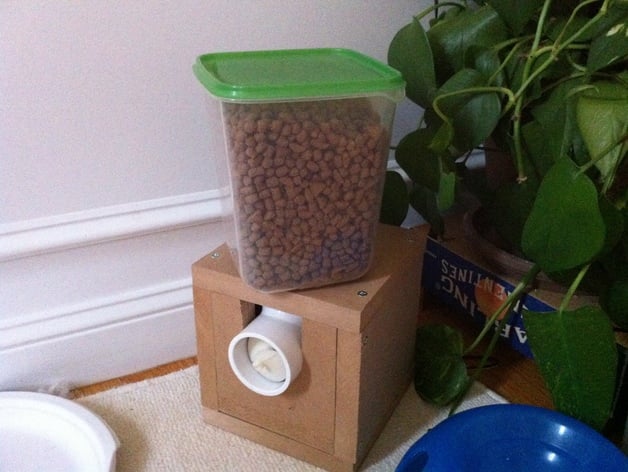
Auger-based Cat Feeder
thingiverse
The Automated Cat Feeder project is based on Tunnel's idea and involves a series of trials and experiments with different designs. The final version is semi-parametric, with many hardcoded numbers. To see it in action, you can watch the prototype video (http://www.youtube.com/watch?v=V7uvNemqq40). The feeder requires several components including a continuous-rotation servo (Sparkfun ROB-09347), 1.5" PVC T-joint tubing, PVC solvent or acetone, an Arduino for control logic, a container to hold kibble, and a 12V 0.5A power supply. The construction process involves printing specific parts such as "tubemount," "screwplate," and "auger_screwplate." Make sure the servo is oriented correctly and attached securely. Programming is done using the provided "feeder.ino" file, which allows for feeding 0.5 cups of kibble every 8 hours with an option for intermediate feeding. Additional features like RFID sensing capability can be added in the future. The feeder can be attached to a housing once everything works properly, and cats can be trained to use it. Some notes for improvement include possibly combining certain parts, using a larger 1.5" T-junction for better functionality, and adding servo reversals to prevent jamming. The project's energy usage is low at around 2W. A spout attachment is also available for added convenience. To modify the design, adjust parameters in the "auger.scad" file and export specific parts as separate files.
With this file you will be able to print Auger-based Cat Feeder with your 3D printer. Click on the button and save the file on your computer to work, edit or customize your design. You can also find more 3D designs for printers on Auger-based Cat Feeder.
